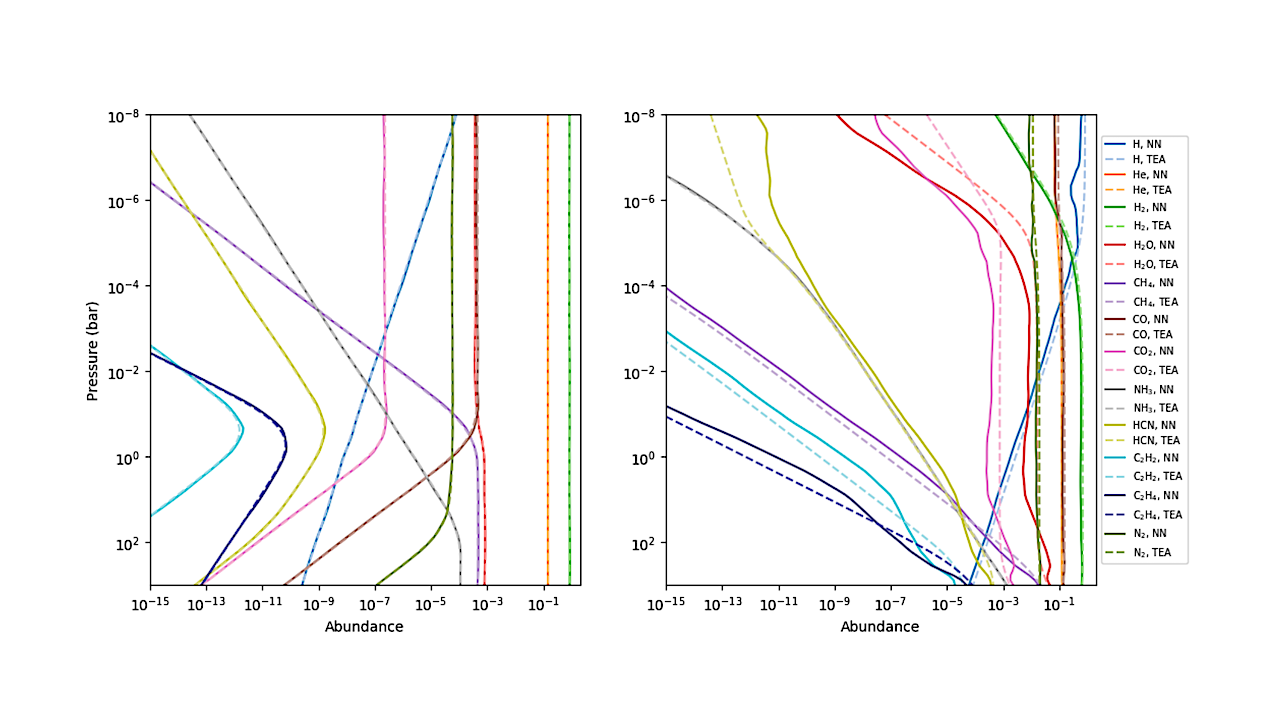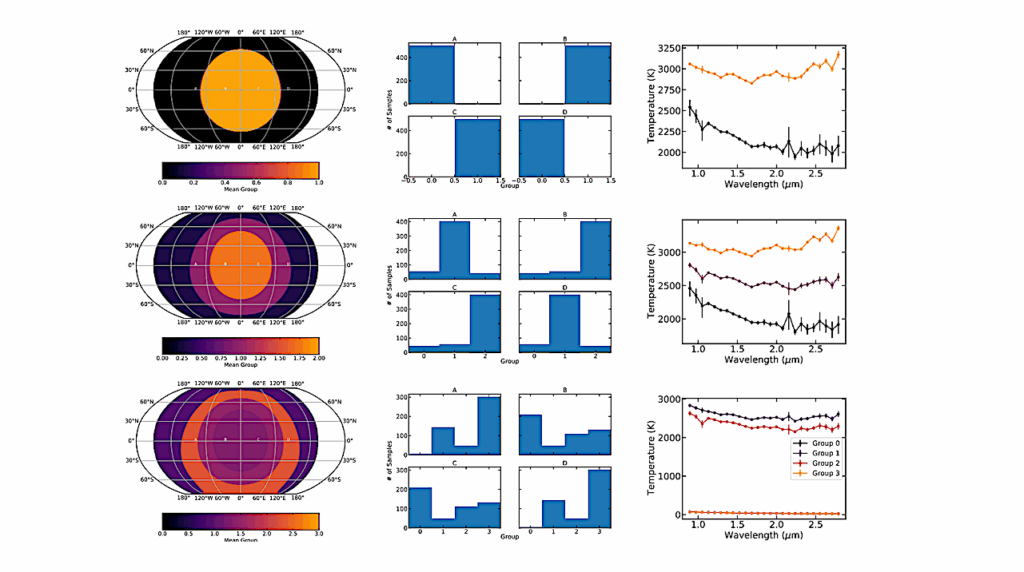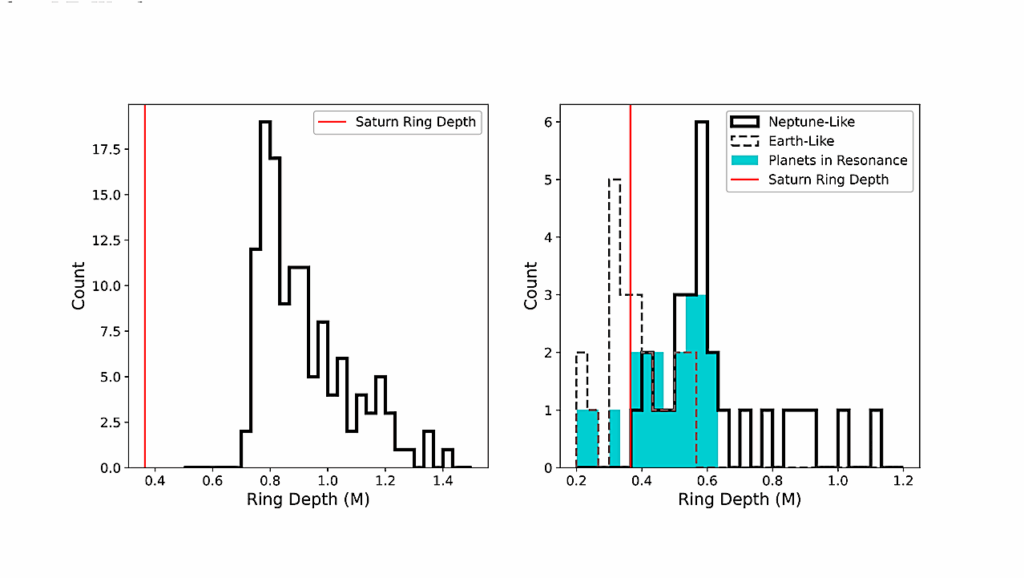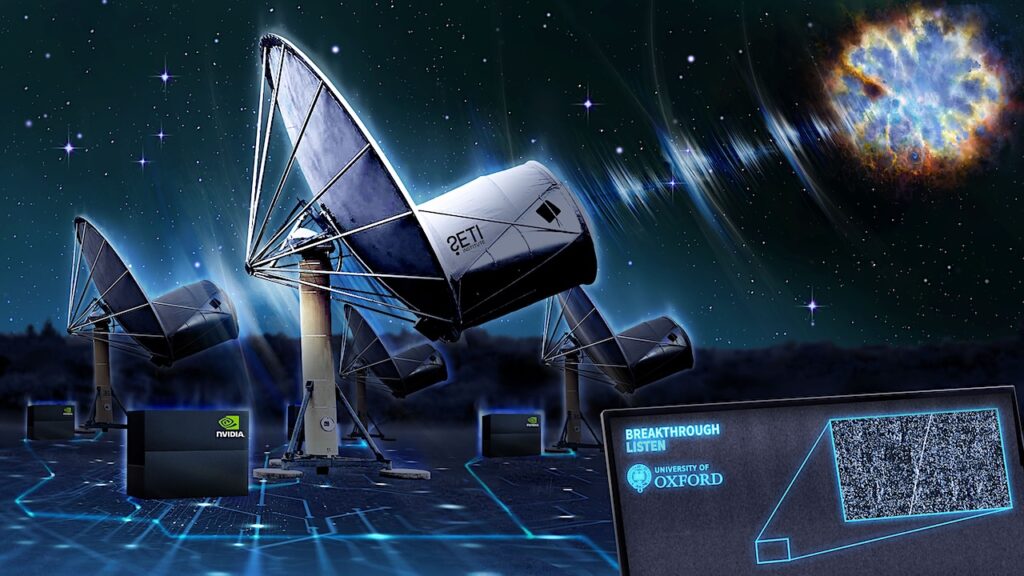Towards 3D Retrieval of Exoplanet Atmospheres: Assessing Thermochemical Equilibrium Estimation Methods

Characterizing exoplanetary atmospheres via Bayesian retrievals requires assuming some chemistry model, such as thermochemical equilibrium or parameterized abundances. The higher-resolution data offered by upcoming telescopes enables more complex chemistry models within retrieval frameworks.
Yet, many chemistry codes that model more complex processes like photochemistry and vertical transport are computationally expensive, and directly incorporating them into a 1D retrieval model can result in prohibitively long execution times. Additionally, phase-curve observations with upcoming telescopes motivate 2D and 3D retrieval models, further exacerbating the lengthy runtime for retrieval frameworks with complex chemistry models.
Here, we compare thermochemical equilibrium approximation methods based on their speed and accuracy with respect to a Gibbs energy-minimization code. We find that, while all methods offer orders of magnitude reductions in computational cost, neural network surrogate models perform more accurately than the other approaches considered, achieving a median absolute dex error <0.03 for the phase space considered.
While our results are based on a 1D chemistry model, our study suggests that higher dimensional chemistry models could be incorporated into retrieval models via this surrogate modeling approach.
Michael D. Himes, Joseph Harrington, Atilim Gunes Baydin
Comments: 22 pages, 14 figures, submitted to PSJ 2022/11/22, revised 2023/3/7, accepted 2023/3/23
Subjects: Earth and Planetary Astrophysics (astro-ph.EP); Instrumentation and Methods for Astrophysics (astro-ph.IM)
Cite as: arXiv:2304.00073 [astro-ph.EP] (or arXiv:2304.00073v1 [astro-ph.EP] for this version)
Submission history
From: Michael Himes
[v1] Fri, 31 Mar 2023 18:44:14 UTC (13,053 KB)
https://arxiv.org/abs/2304.00073
Astrobiology








